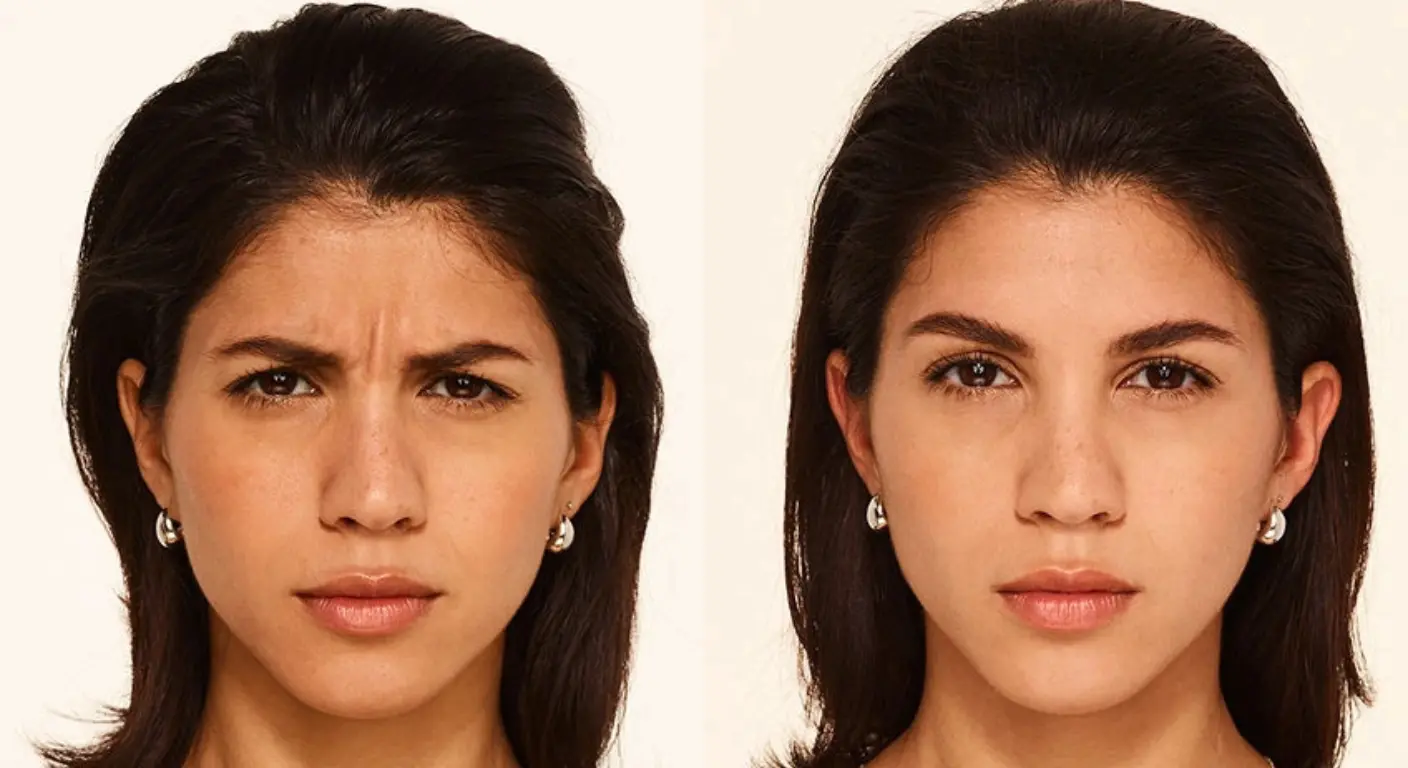
The expectation surrounding a Botulinum Toxin Type A (BTA) treatment, widely known by the brand name Botox, often centers on a desire for immediate cosmetic change. However, the precise timeline for observing a noticeable reduction in dynamic wrinkles is far from instantaneous, relying instead on a multi-stage biological process that unfolds over approximately two weeks. Patients who anticipate walking out of the clinic with a completely smooth brow or erased crow’s feet on the same day often find their expectations mismatched with the neurochemical reality of how the product works. Understanding the mechanism of action—the temporary blockade of acetylcholine release at the neuromuscular junction—is key to grasping why the results manifest gradually, rather than abruptly. This progressive onset is a crucial aspect of managing patient communication and ensuring satisfaction with the final aesthetic outcome.
The precise timeline for observing a noticeable reduction in dynamic wrinkles is far from instantaneous, relying instead on a multi-stage biological process
The journey from injection to full muscle relaxation begins not with the appearance of softened lines, but with imperceptible molecular events deep within the treated muscles. “The precise timeline for observing a noticeable reduction in dynamic wrinkles is far from instantaneous, relying instead on a multi-stage biological process” accurately frames the chemical cascade at play. After the initial, meticulous placement of the neurotoxin by a qualified practitioner, the BTA molecule must be taken up by the presynaptic nerve ending. Once internalized, it begins the crucial task of cleaving the SNAP-25 protein, a necessary component of the SNARE complex responsible for fusing the acetylcholine-containing vesicles with the nerve terminal membrane, thus preventing the release of the neurotransmitter. This entire internalization and cleavage process is enzyme-dependent and requires time. For most individuals, the first tangible, albeit minor, signs that the treatment has begun to work—such as a slight feeling of heaviness or a minor restriction in full muscle contraction—may emerge as early as 24 to 72 hours post-injection, marking the initial weakening of the targeted muscle fibers.
For most individuals, the first tangible, albeit minor, signs that the treatment has begun to work—such as a slight feeling of heaviness or a minor restriction in full muscle contraction—may emerge as early as 24 to 72 hours post-injection
While the very first few days may bring subtle sensations, the more substantial and cosmetically significant changes begin to accelerate during the first week following the procedure. “For most individuals, the first tangible, albeit minor, signs that the treatment has begun to work—such as a slight feeling of heaviness or a minor restriction in full muscle contraction—may emerge as early as 24 to 72 hours post-injection” notes the subtle start, but the acceleration of effect is a hallmark of the subsequent period. Around day four to seven, patients often report a distinct difference: a noticeable softening of the dynamic lines—those that appear only with facial expression—in the treated areas, such as the glabella (frown lines) and the periocular region (crow’s feet). This mid-week transformation reflects the increasing proportion of nerve terminals within the injected zone that have successfully incorporated the toxin and blocked neurotransmitter release. However, it is paramount to understand that even at the one-week mark, the muscles are generally still undergoing the relaxation process and have not yet reached their state of maximum flaccidity, meaning the final result remains a few days away.
Around day four to seven, patients often report a distinct difference: a noticeable softening of the dynamic lines
It is a generally accepted clinical standard that the maximum, or peak, effect of BTA treatment is typically achieved at the 14-day mark. “Around day four to seven, patients often report a distinct difference: a noticeable softening of the dynamic lines” emphasizes the halfway point, while two weeks signify the culmination. At this point, the targeted facial muscles are fully relaxed, and the overlying skin has had sufficient time to smooth out from the chronic pressure of repeated contraction. This two-week checkpoint is highly important for both the patient and the practitioner. It is the designated time for a follow-up assessment, where the full extent of the correction can be observed under static and dynamic conditions. Only after waiting the full 14 days is it appropriate for the clinician to determine if any minor touch-ups or adjustments are necessary to refine the symmetry or address any residual, stubborn lines that might require a few additional units of product. Rushing this assessment can lead to over-correction, which is far more challenging to manage than under-correction.
It is the designated time for a follow-up assessment, where the full extent of the correction can be observed under static and dynamic conditions.
Several independent biological and technical variables conspire to influence the velocity of the BTA’s onset, meaning the two-week timeframe is an average, not an absolute guarantee. “It is the designated time for a follow-up assessment, where the full extent of the correction can be observed under static and dynamic conditions” highlights the assessment timing, but a range of factors dictates the speed. The sheer size and inherent strength of the target muscle mass play a significant role; for instance, the frontalis muscle across the forehead is larger and often stronger than the orbicularis oculi (crow’s feet), and consequently, it may take a few extra days for the effects to fully manifest. Furthermore, a patient’s individual metabolic rate affects how quickly their system processes the toxin. Those with a naturally high metabolism or individuals who engage in frequent, intense cardiovascular exercise may observe a slightly faster onset, though paradoxically, they may also experience a shorter overall duration of effect compared to the general population.
The sheer size and inherent strength of the target muscle mass play a significant role
Beyond the patient’s own biology, the quality of the practitioner’s technique is a non-negotiable factor in maximizing the speed and efficacy of the cosmetic outcome. “The sheer size and inherent strength of the target muscle mass play a significant role” focuses on patient factors, while injection technique is entirely operator-dependent. Precise placement of the injection is essential; the BTA must be delivered directly into the specific muscle belly responsible for the problematic dynamic line. Improper depth or placement can result in the product not fully reaching the target area, leading to delayed or asymmetrical results. Moreover, the correct dilution and dosage—the number of BTA units injected per site—are paramount. Injecting an insufficient dose will certainly delay the onset and prevent a full, satisfying result, whereas an excessive dose, while potentially speeding up the onset, carries an increased risk of diffusion to adjacent, untargeted muscles, leading to undesirable temporary weakness in surrounding areas.
Improper depth or placement can result in the product not fully reaching the target area, leading to delayed or asymmetrical results.
The experience level of the injector can also subtly affect the perception of the results timeline, even if the underlying pharmacology remains consistent. “Improper depth or placement can result in the product not fully reaching the target area, leading to delayed or asymmetrical results” points to clinical proficiency. An experienced specialist possesses a deeper understanding of anatomical variations and how to tailor the injection pattern—often employing micro-droplet techniques—to the unique facial structure and muscle dynamics of each individual. This tailored approach often leads to a result that appears more “natural” and integrated sooner, simply because the treatment is optimally distributed to achieve a smooth, rather than a patchy or frozen, appearance. In contrast, a less experienced injector might follow a more rigid, template-based pattern, which may yield a less balanced muscle relaxation and require the full two weeks for any unevenness to become apparent and potentially be corrected.
An experienced specialist possesses a deeper understanding of anatomical variations and how to tailor the injection pattern
A less commonly discussed influence on the visible results timeline is the patient’s prior history with neuromodulators. “An experienced specialist possesses a deeper understanding of anatomical variations and how to tailor the injection pattern” is about the clinician, but patient history is also critical. Individuals who are receiving BTA for the very first time might find the onset process to be slightly more drawn out than those who have been receiving regular treatments for a sustained period. This is partly due to the virgin state of the muscle; it has never experienced BTA-induced paralysis before, and it may take longer to fully cease contraction. Over time, repeated treatments can induce a degree of subtle, functional muscle atrophy, meaning the muscle is slightly smaller and weaker even when the toxin has worn off. This cumulative effect often leads to both a slightly quicker onset and, in many cases, a longer duration of the desirable smoothing effect for subsequent sessions.
Individuals who are receiving BTA for the very first time might find the onset process to be slightly more drawn out than those who have been receiving regular treatments
Finally, the visibility of the correction is fundamentally limited by the nature of the lines being treated. “Individuals who are receiving BTA for the very first time might find the onset process to be slightly more drawn out than those who have been receiving regular treatments” refers to the muscle’s initial reaction, but the skin itself is the final canvas. BTA is highly effective for dynamic wrinkles, but it cannot fundamentally erase deep-set, chronic static lines—the etched-in creases that remain visible even when the face is at rest. While the relaxation of the underlying muscle prevents further deepening and can allow the skin to gradually remodel and soften these static lines over months, the initial two-week timeline for BTA results primarily reflects the improvement in the dynamic components. Managing this distinction in patient expectation—the difference between dynamic line erasure and static line softening—is a crucial element of the pre-treatment consultation that can prevent disappointment when the two-week mark arrives.
